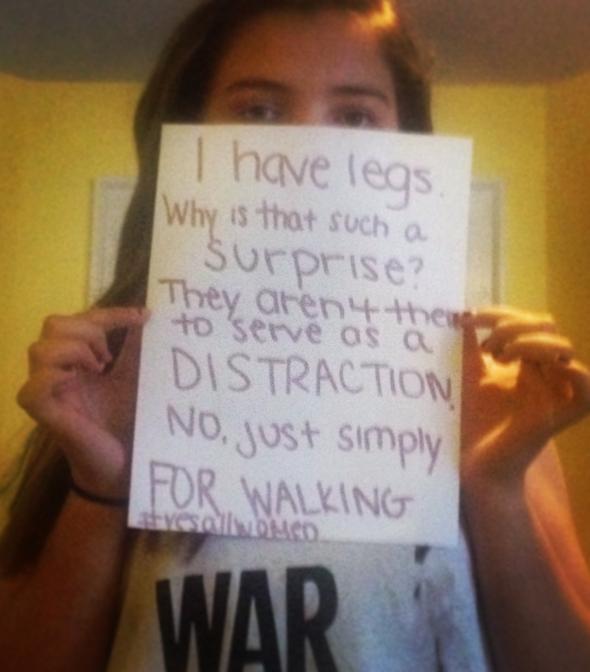I took this photo in May 2012 of my then-sixth-grade daughter in the lobby of her Maplewood, New Jersey, school. She had a solo in her chorus concert that evening and wanted a keepsake of the day. In my eye, she is the vision of preteen enthusiasm and confidence.
School officials deemed otherwise. Her shorts violated the “fingertip” rule of the South Orange-Maplewood School District—whereby shorts or skirts must “reach to the fingertips of the extended arm”—now notorious in middle school vernacular. Shortly after I snapped the shot, she was pulled from class and sent to detention, where she was ordered to don a Hester Prynne–style “shirt of shame” for the rest of the school day—an oversized men’s shirt that covered her from neck to shins.
Every spring, the dress code wars arise anew. Parents get a slew of e-blasts from school administrators, like this one from the principal of a nearby middle school: “Dress code continues to be a concern, specifically with our female students.” There is talk about clothes interfering with establishing and maintaining a “learning environment”— prompting the question of whose “learning environment” is being prioritized and at whose expense. Scripted morning announcements at my daughter’s school include daily reminders, “to the young ladies,” about the importance of wearing appropriate attire.
Similar dress code stories swirl around the Internet—from Evanston, Illinois, where a ban on leggings sparked community outrage (and the best protester sign yet: “Are my pants lowering your test scores?”), to Montreal, where a student was suspended for protesting her school’s practice of lining up girls to assess the length of their shorts and the width of their tank-top straps. And it isn’t just secondary schools. A sign posted on the door of the nursing school at the University of Texas lists off-limits attire for women that otherwise “distract[s] from the learning environment.” (Jezebel reports that the sign has now been removed.) And in Utah, a high school digitally altered yearbook photos to cover up girls’ shoulders and other body parts.
After my daughter was punished on that spring day two years ago, I’ve struggled with this issue. I’ve vetoed bat mitzvah dresses I deemed too short, camisoles too low-cut. It is a fine line: I want her to feel comfortable in her skin. But parenting teenagers is all about the gray areas; our discussions about dress and self-awareness leave room for nuance. In rejecting an outfit, I have never, ever communicated to my child that her dress was a “distraction” to others or that she bore responsibility if someone reacted in any way—favorably, rudely, distracted, or otherwise—to her body. That schools are passing on this very message to her and other female students—and simultaneously communicating to boys that their learning environment is being compromised by the sight of girls’ limbs or cleavage—is unhealthy and unsound at best, illegal at worst.
The debate has taken on new meaning in the aftermath of the Santa Barbara rampage—as national attention has shifted to how the misogyny embedded in our culture results in violence against women, in numbers that are shocking. The kids are wise to it, too. Some have started attaching the hashtag #YesAllWomen to Instagram photos and statements representing how they feel about the way their school singles out girls for attention, punishment, and, yes, blame. Another rallying cry: #Iammorethanadistraction. Those hashtags give me hope that our girls will not so easily be shamed—that they get what’s going on—but it’s up to us parents to stand up to school administrators, to e-blast them right back.

Courtesy of Rebecca Wolf
My daughter was punished for showing too much of her (gasp!) legs. Her school is normalizing the notion that girls’ bodies are distractions. That girls bear responsibility for boys’ reactions to their bodies. That boys have thoughts that are inherently impure and will lead to misconduct. The school’s chosen mode of punishment is disrupting girls’ educational experiences and quite possibly hindering their legal right to an education. The message and actions perpetuated by gender-biased implementation of school dress codes—the blaming and shaming of our girls—has got to stop.
